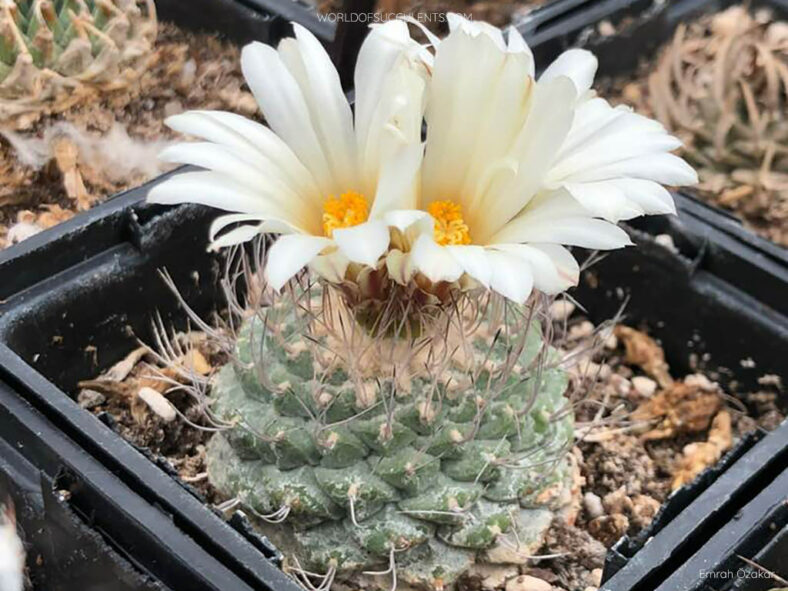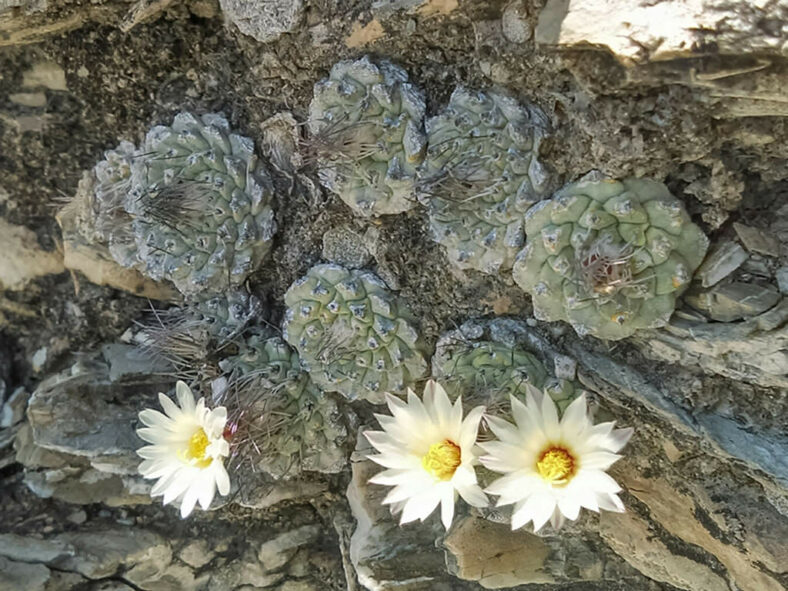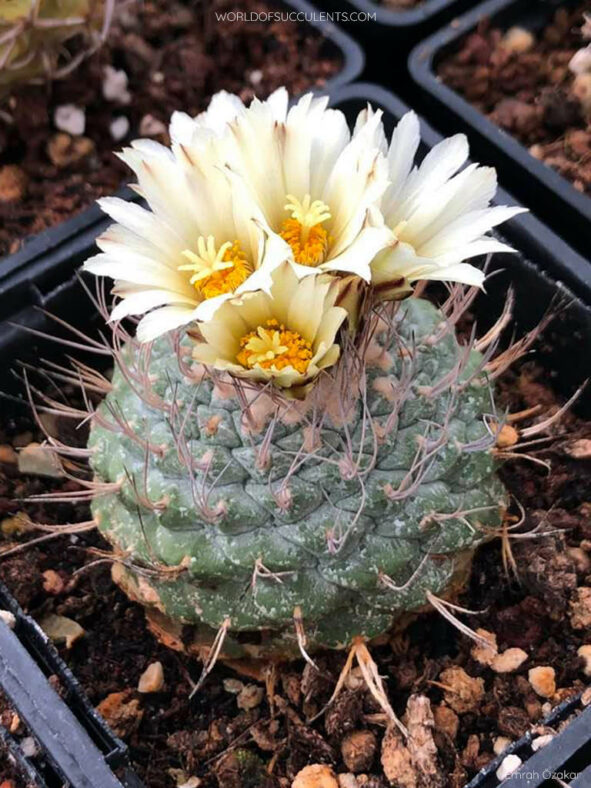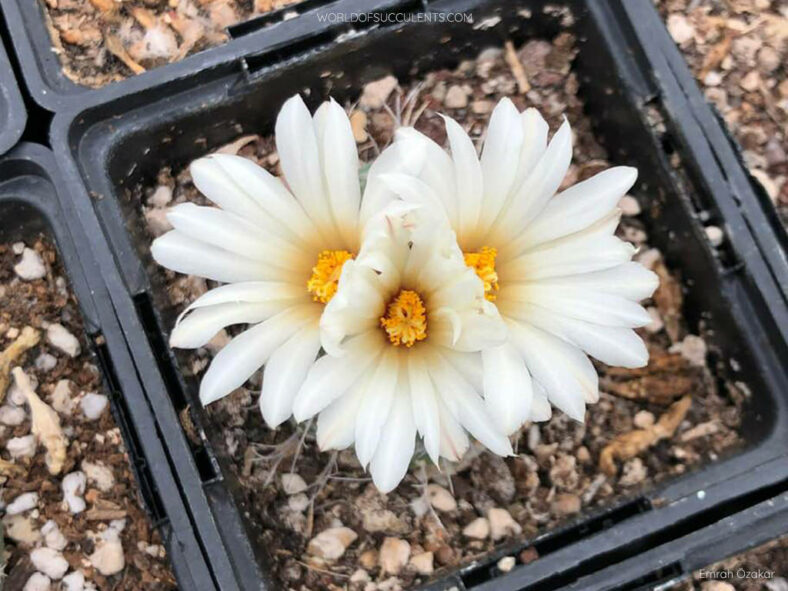Strombocactus disciformis was first described as Mammillaria disciformis by Augustin-Pyrame de Candolle in 1828 but was reclassified as Strombocactus by Nathaniel Lord Britton and Joseph Nelson Rose in 1922.
Scientific Name
Strombocactus disciformis (DC.) Britton & Rose
Synonym(s)
Ariocarpus disciformis, Cactus disciformis, Echinocactus disciformis, Mammillaria disciformis, Pediocactus disciformis, Strombocactus disciformis subsp. disciformis
Scientific Classification
Family: Cactaceae
Subfamily: Cactoideae
Tribe: Cacteae
Genus: Strombocactus
The specific epithet "disciformis (disk-ee-FORM-iss)" means "disciform" and refers to the shape of the stem of this species.
Origin
Strombocactus disciformis is native to Mexico. It occurs on almost vertical, weathered limestone rocks at elevations between 3,280 and 5,250 feet (1,000 and 1,600 m) in Guanajuato, Querétaro, and Hidalgo.
Description
Strombocactus disciformis is a rare cactus with a turnip-like root and a small, usually solitary stem covered with overlapping, spirally arranged tubercles. The stem grows in a disk shape in its natural habitat, half hidden in the ground. However, it is nearly spherical in cultivation with a slightly depressed apex. The stem is blue-green with a grayish tinge and can reach up to 3.2 inches (8 cm) in height and 3.6 inches (9 cm) in diameter. The bristly spines are curved, dark grey at the tips and pale grey at the base, and can grow up to 0.8 inches (2 cm) long. The areoles are located on the blunt ends of the tubercles and usually bear 4 to 5 spines that fall off after a few years.
From spring to summer, Strombocactus disciformis produces funnel-shaped, white to cream flowers from the youngest areoles at the tip of the stem. The flowers remain open for several days and can reach up to 1.4 inches (3.5 cm) in diameter. The brown fruits are elongated and can grow up to 0.3 inches (0.7 cm) in diameter. They splits down their length, releasing freely the reddish-brown seeds.

How to Grow and Care for Strombocactus disciformis
Light: For optimal growth of your Strombocactus disciformis, ensure it is planted in an area that receives at least four hours of direct sunlight daily. If growing indoors, placing the cactus near a bright window is best to ensure it gets enough light. It is advisable to keep it on the balcony or in the garden from spring to fall for additional light.
Soil: To ensure good root aeration and drainage, use commercial cactus soil or create your own well-draining soil mix.
Temperature: Strombocactus disciformis is heat tolerant but is not a cold-hardy plant. It grows best in USDA Plant Hardiness Zones 9b to 11b, with average minimum winter temperatures ranging from 25 to 50 °F (-3.9 to 10 °C).
Watering: Water deeply from spring to fall, and wait until the soil dries out before watering again. Never let your pot sit in water, and suspend watering when the plant goes dormant in the winter.
Fertilizing: During the growing season, Strombocactus disciformis benefits from fertilizing. Apply a water-soluble fertilizer for cacti and other succulents. Suspend feeding during the winter when the plant goes dormant.
Repotting: Repot the cactus every two or three years into a slightly larger pot, preferably during late winter or early spring. However, repotting can be done at any time of the year.
Propagation: Since Strombocactus disciformis usually has a solitary growth habit, it can only be propagated from seeds. For the best results, sow the seeds in late spring or summer.
Learn more at How to Grow and Care for Mammillaria.
Toxicity of Strombocactus disciformis
Strombocactus disciformis is non-toxic but has sharp spines, so keep it away from children and pets.
Links
- Back to genus Strombocactus
- Succupedia: Browse succulents by Scientific Name, Common Name, Genus, Family, USDA Hardiness Zone, Origin, or cacti by Genus
Photo Gallery
Click on a photo to see a larger version.


